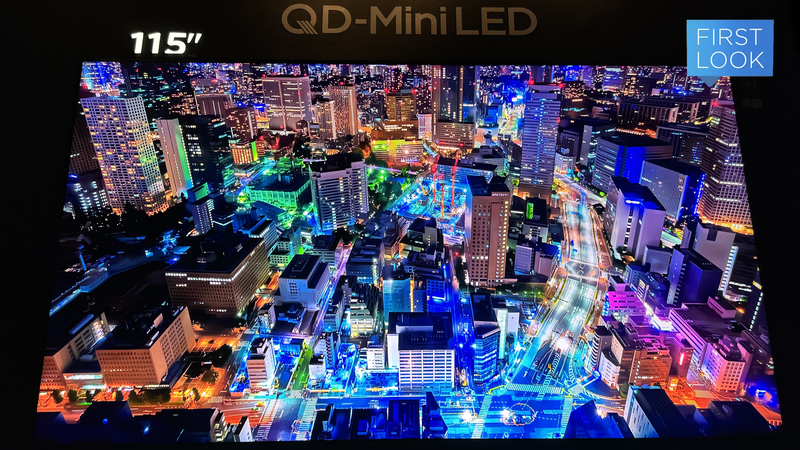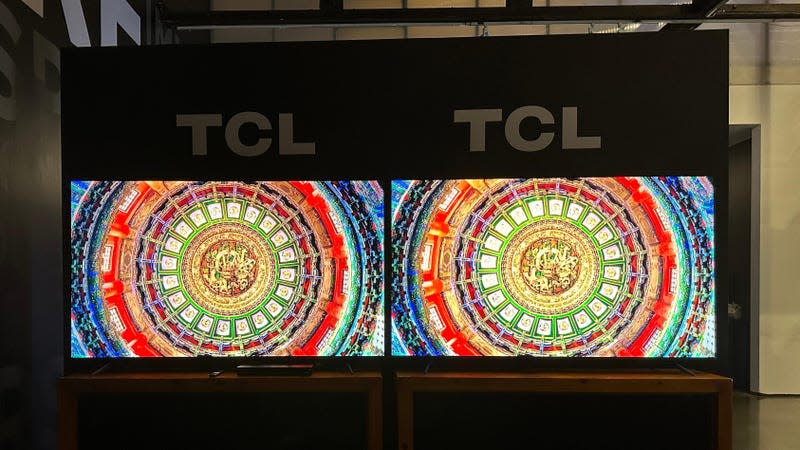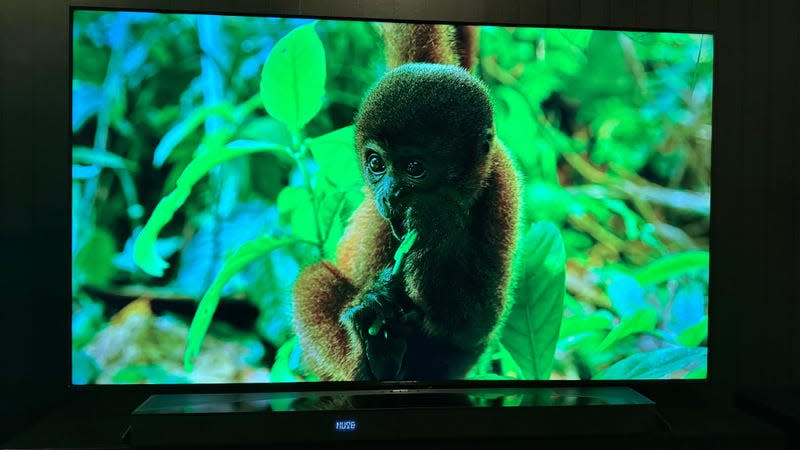TCL’s Latest Budget-Minded TVs Put a Discounted Price on Premium

Most folks who walk into a room with an 85-inch TV, let alone a 98-inch TV, offer one of two impressions, often verbalized with some screech of surprise. One is, “Wow, look at the size of that thing.” The other is, “That’s just too damn big.” TV Maker TCL, a company more known as the quality brand for those looking to spend a little less on their screen, now emphasizes big, big, big TVs. Still, they’re promising that those without extra deep pockets could spend a little less for quality pictures and good contrast with the new QM7 and QM8 mini-LED TVs and the new and improved S5.
Just as last year’s TVs emphasized that quality 4K quality with good brightness, the new TVs are a mix of the S-series entry-level direct LEDs and the Q-class that pique at QD mini-LED TVs. The latter includes the QM8 model, which is supposed to rival other major brands’ top televisions, such as Samsung and LG, but at a slight discount. Gizmodo already considered last year’s QM8 one of the best 4K mini-LEDs you can get at a starting price of $1,700 (and probably on sale as well). However, this year, TCL is trying to claim you’ll have best-in-class brightness and picture quality, and still, you won’t spend as big a premium as other brands.
I had the chance to glance at each of TCL’s 2024 TVs in a controlled environment. The S-series remains the most budget-friendly of them all, with the S2 (720p) and S3 (1090p FHD with HDR10 and HLG support). The big update on that side is the S5. What about S4, you ask? Oh, never mind that. TCL skipped a number to try to emphasize the difference in quality. It’s still a direct LED backlit TV, but it includes the AiPQ processor found in the Q-series, the game bar, and Game Accelerator that can push the max PS5 and Xbox Series X settings of 120 FPS at a 120 Hz variable refresh rate. It also supports Dolby Vision and HDR10+. At a starting price of $350, it’s easily the most bang for the buck of any of TCL’s 2024 TVs before you break into mini-LED.
TCL’s Q-Series Claims Big Brightness Enhancements

It’s the Q series where things start to get more robust and a bit more expensive. There’s no OLED option either, but TCL is hanging its coat fully on mini-LED. The company’s reps tried to stress how the picture quality and contrast on its top TVs were just as good, or even better than OLED–especially thanks to the extra brightness of backlit screens. TCL claims its top-of-the-line QM8 has a peak brightness of up to 5,000 nits and more than 5,000 dimming zones. It reminds me most of Sony’s Bravia 9, which also emphasized mini-LED at the top of the heap with massive promises of total brightness.
It’s certainly a big and bright TV, and while I only watched a few standardized shots, I came away largely impressed with the black levels on the screen. TCL brought me aside to compare Samsung’s and LG’s QLEDs directly to their own and even LG’s G3 OLED. Yes, the QM8 could hold its own in the company’s demo session, but I still would need to get my hands on the TV for further testing before I come to any judgments.
There are new updates to the Q65 and Q68 QLEDs with better color accuracy and brightness. And, of course, the cheaper QM7 starts at 55 inches and $700, a little more than 1,500 dimming zones and 2,400 nits of peak brightness. It’s a rather fair alternative to the QM8, with solid black levels that can hold up on their own.
The QM8 line starts with the 65-inch 65QM751G at $2,000 MSRP, though that’s still $700 less than Samsung’s excellent QN90D 4K Neo QLED at the same size. It goes up to 85-inches at $4,000 and 98-inches at a whopping $8,000. Oh, what did you think that was it? There’s also a new QM89 QD-mini-LED model that, at 115 inches, hails for a mind-numbing $27,000.
TCL Makers Want to Make Big on BIG

Sure, big is big, but even listing off that pricing makes me squeamish. Then again, other brands also try to push absurd TVs for the status-obsessed. Take this 114-inch Micro LED TV from Samsung for $132,630. That’s so much money that you get an extra 8K QLED as a bonus. Sure, you won’t be buying it, but some rich guy with too much money to spend will. If you feel the same pinch in your stomach reading about six-figure screens, then I shouldn’t tell you about Samsung’s The Wall All-in-One 146-inch TV that costs $220,000.
Why the new obsession with big? TCL’s reps told me that, in their minds, there’s a real market for 98-inch screens. If you have the space and deep pockets for a massive TV at 85 inches, you can probably go for the 98-inch. As somebody who doesn’t spend much time hanging on the coattails of the rich and powerful, I don’t think there’s any way I can say they’re wrong. Although I will make note of the QM8’s starting price being $300 more than last year’s model for the same size, TCL is promising a massive bump in picture quality and dimming zones.
TCL is one of the top-selling screen brands in the U.S., though they don’t seem to get as much prevalence as Samsung, LG, or Sony. They also have their line of tablets and phones, but they want to make a bigger splash in the ultra-premium market for folks with too much money. Last year, the company showed off the excessive, folding prototype OLED screen that fits into a coffee table. The company is still pushing “value” as one of its main selling points, but it’s now hoping to chase a bit of clout with bigger screens. For the rest of us, we can stick with the screens that cost less than three times the average yearly salary.
Want more of Gizmodo’s consumer electronics picks? Check out our guides to the best laptops, best TVs, and best headphones. If you want to learn about the next big thing, see our guide to everything we know about the iPhone 16.

